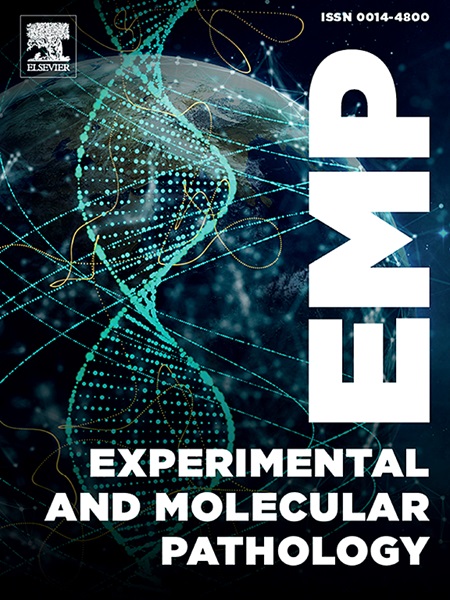直接- pcr (D2P)方法在传染病分子诊断中的应用评价
IF 3.7
4区 医学
Q2 PATHOLOGY
引用次数: 0
摘要
本研究评估了直接到pcr (D2P)方法作为传统核酸提取技术诊断尿路感染、性传播感染和呼吸道感染的一种简化的、不依赖提取的替代方法的性能。D2P方法采用专为细菌、真菌和病毒靶点定制的抗菌肽裂解缓冲液,无需柱或珠基纯化,即可从临床和人造标本中直接扩增。对比分析了基于二氧化硅柱(QIAGEN)和基于磁珠(KingFisher)的微生物参考分离物和116份剩余临床样品的提取方法。结果表明,D2P方法在多种病原体(包括革兰氏阴性和革兰氏阳性细菌、念珠菌、ssRNA病毒(如CoV-229E、副流感病毒1和2)和dsDNA病毒(如HSV、hav)中具有与传统提取流程相当的敏感性和特异性。值得注意的是,D2P在提取多重耐药真菌假丝酵母(Candida auris)核酸方面优于QIAGEN和KingFisher。所有平台的检测限和扩增效率均在可接受范围内,R2值在0.92 ~ 0.99之间,斜率与MIQE标准一致。D2P方案将总样品处理时间从~ 120分钟减少到~ 45分钟,最大限度地减少了动手步骤,并且在混浊或溶血样品中表现出有效的性能,使其适用于高通量和资源有限的环境。然而,在高pcr抑制剂含量或低目标产率的样品中观察到局限性,建议在其他基质上进行更广泛的验证。这些发现支持D2P作为一种可靠、有效和可扩展的分子诊断替代方法,具有广泛的临床应用。将D2P整合到诊断工作流程中,可在集中式实验室和分散式或医疗点环境中促进获得快速、具有成本效益的病原体检测。本文章由计算机程序翻译,如有差异,请以英文原文为准。

Evaluation of direct-to-PCR (D2P) method for molecular diagnosis of infectious diseases
This study evaluates the performance of the Direct-to-PCR (D2P) method as a streamlined, extraction-independent alternative to conventional nucleic acid extraction techniques for diagnosing urinary tract infections, sexually transmitted infections, and respiratory tract infections. The D2P approach employs proprietary antimicrobial peptide-based lysis buffers tailored for bacterial, fungal, and viral targets, enabling direct amplification from clinical and contrived specimens without column- or bead-based purification. Comparative analyses were conducted against silica column-based (QIAGEN) and magnetic bead-based (KingFisher) extraction methods using both microbial reference isolates and 116 residual clinical samples. Results demonstrate that the D2P method yields comparable sensitivity and specificity to conventional extraction workflows across a diverse panel of pathogens—including Gram-negative and Gram-positive bacteria, Candida species, ssRNA viruses (e.g., CoV-229E, Parainfluenza Virus 1 and 2), and dsDNA viruses (e.g., HSV, HAdV). Notably, D2P outperformed both QIAGEN and KingFisher in extracting nucleic acids from Candida auris, a multidrug-resistant fungal pathogen. Limit of detection and amplification efficiency remained within acceptable ranges across all platforms, with R2 values between 0.92 and 0.99, and slopes consistent with MIQE standards. The D2P protocol reduced total sample processing time from ∼120 min to ∼45 min, minimized hands-on steps, and demonstrated effective performance in turbid or hemolyzed samples—making it suitable for high-throughput and resource-limited settings. However, limitations were observed in samples with high PCR-inhibitor content or low target yield, and broader validation across additional matrices is recommended. These findings support D2P as a reliable, efficient, and scalable molecular diagnostic alternative with broad clinical utility. Integration of D2P into diagnostic workflows could enhance access to rapid, cost-effective pathogen detection in both centralized laboratories and decentralized or point-of-care environments.
求助全文
通过发布文献求助,成功后即可免费获取论文全文。
去求助
来源期刊
CiteScore
8.90
自引率
0.00%
发文量
78
审稿时长
11.5 weeks
期刊介绍:
Under new editorial leadership, Experimental and Molecular Pathology presents original articles on disease processes in relation to structural and biochemical alterations in mammalian tissues and fluids and on the application of newer techniques of molecular biology to problems of pathology in humans and other animals. The journal also publishes selected interpretive synthesis reviews by bench level investigators working at the "cutting edge" of contemporary research in pathology. In addition, special thematic issues present original research reports that unravel some of Nature''s most jealously guarded secrets on the pathologic basis of disease.
Research Areas include: Stem cells; Neoangiogenesis; Molecular diagnostics; Polymerase chain reaction; In situ hybridization; DNA sequencing; Cell receptors; Carcinogenesis; Pathobiology of neoplasia; Complex infectious diseases; Transplantation; Cytokines; Flow cytomeric analysis; Inflammation; Cellular injury; Immunology and hypersensitivity; Athersclerosis.

 求助内容:
求助内容: 应助结果提醒方式:
应助结果提醒方式:


